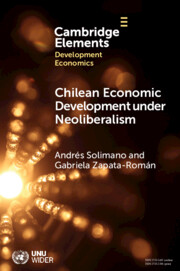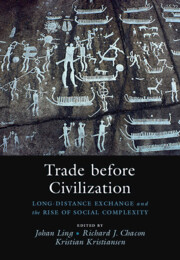Refine search
Actions for selected content:
51 results
Invisible toiling hands: the work and life of domestic workers in rural India
-
- Journal:
- The Economic and Labour Relations Review ,
- Published online by Cambridge University Press:
- 15 September 2025, pp. 1-17
-
- Article
- Export citation
7 - Key Findings
-
- Book:
- Global Business and Local Struggle
- Published online:
- 18 July 2025
- Print publication:
- 07 August 2025, pp 197-211
-
- Chapter
- Export citation
4 - NJMs as Interventions in Fields of Struggle
-
- Book:
- Global Business and Local Struggle
- Published online:
- 18 July 2025
- Print publication:
- 07 August 2025, pp 112-134
-
- Chapter
- Export citation
Between dissonance and dialogue: Reimagining sociolinguistic critique - Alfonso Del Percio and Mi–Cha Flubacher (eds.), Critical Sociolinguistics: Dialogues, Dissonances, Developments London: Bloomsbury Academic, 2024. Pp. 489+i. Hardback $157, ISBN:9781350293526
-
- Journal:
- English Today , First View
- Published online by Cambridge University Press:
- 06 May 2025, pp. 1-3
-
- Article
- Export citation
Integrating social innovation and public policy: lessons from early childhood education and care in Barcelona, Spain
-
- Journal:
- Journal of Public Policy / Volume 44 / Issue 4 / December 2024
- Published online by Cambridge University Press:
- 20 November 2024, pp. 847-865
-
- Article
-
- You have access
- Open access
- HTML
- Export citation
Redistribution policies towards poor families in Europe
-
- Journal:
- Journal of International and Comparative Social Policy / Volume 40 / Issue 1 / March 2024
- Published online by Cambridge University Press:
- 18 November 2024, pp. 75-92
-
- Article
-
- You have access
- Open access
- HTML
- Export citation
Closing the employment gap: Estimations of Indigenous employment in Indigenous- and non-Indigenous-owned businesses in Australia
-
- Journal:
- The Economic and Labour Relations Review / Volume 35 / Issue 3 / September 2024
- Published online by Cambridge University Press:
- 09 October 2024, pp. 685-707
-
- Article
-
- You have access
- Open access
- HTML
- Export citation
12 - Communicating in the Brazilian Presidential Election
- from Part IV - The Pollster as Spin Doctor
-
- Book:
- Polls, Pollsters, and Public Opinion
- Published online:
- 01 November 2024
- Print publication:
- 04 July 2024, pp 190-209
-
- Chapter
- Export citation
Who is Anaemic in India? Intersections of class, caste, and gender
-
- Journal:
- Journal of Biosocial Science / Volume 56 / Issue 4 / July 2024
- Published online by Cambridge University Press:
- 04 June 2024, pp. 731-753
-
- Article
- Export citation
Discrimination, Pluralism, and Social Subordination: On Moreau's Faces of Inequality
-
- Journal:
- Dialogue: Canadian Philosophical Review / Revue canadienne de philosophie / Volume 63 / Issue 1 / April 2024
- Published online by Cambridge University Press:
- 23 April 2024, pp. 31-44
-
- Article
-
- You have access
- Open access
- HTML
- Export citation
A Social Network Analysis of Traditional Labrets and Horizontal Relationships in the Salish Sea Region of Northwestern North America
-
- Journal:
- American Antiquity / Volume 89 / Issue 2 / April 2024
- Published online by Cambridge University Press:
- 07 May 2024, pp. 202-220
- Print publication:
- April 2024
-
- Article
-
- You have access
- Open access
- HTML
- Export citation
3 - Social determinants of health and wellbeing
- from Part 2 - Dimensions of health and wellbeing
-
-
- Book:
- Health and Wellbeing in Childhood
- Published online:
- 08 March 2024
- Print publication:
- 04 March 2024, pp 35-52
-
- Chapter
- Export citation

Chilean Economic Development under Neoliberalism
- Structural Transformation, High Inequality and Environmental Fragility
-
- Published online:
- 18 January 2024
- Print publication:
- 01 February 2024
-
- Element
-
- You have access
- Open access
- HTML
- Export citation
Commodification and EU law: a genealogy
-
- Journal:
- European Law Open / Volume 2 / Issue 2 / June 2023
- Published online by Cambridge University Press:
- 31 October 2023, pp. 372-385
-
- Article
-
- You have access
- Open access
- HTML
- Export citation
Was Nazi Germany an “Accommodating Dictatorship”? A Comparative Perspective on Taxation of the Rich in World War II
-
- Journal:
- Central European History / Volume 56 / Issue 3 / September 2023
- Published online by Cambridge University Press:
- 25 August 2023, pp. 415-435
- Print publication:
- September 2023
-
- Article
-
- You have access
- Open access
- HTML
- Export citation
Social rights scapegoating
-
- Journal:
- Global Constitutionalism / Volume 13 / Issue 1 / March 2024
- Published online by Cambridge University Press:
- 25 August 2023, pp. 220-227
-
- Article
-
- You have access
- Open access
- HTML
- Export citation
Stratified social norms
-
- Journal:
- Economics & Philosophy / Volume 40 / Issue 2 / July 2024
- Published online by Cambridge University Press:
- 05 June 2023, pp. 337-352
-
- Article
-
- You have access
- Open access
- HTML
- Export citation
Population Ageing and Tax Reform in a Dual Welfare State
-
- Journal:
- The Economic and Labour Relations Review / Volume 22 / Issue 3 / November 2011
- Published online by Cambridge University Press:
- 01 January 2023, pp. 45-63
-
- Article
- Export citation
The Last Nationwide Smallpox Epidemic in the Netherlands: Infectious Disease and Social Inequalities in Amsterdam, 1870–1872
-
- Journal:
- Social Science History / Volume 47 / Issue 2 / Summer 2023
- Published online by Cambridge University Press:
- 17 November 2022, pp. 189-216
- Print publication:
- Summer 2023
-
- Article
-
- You have access
- Open access
- HTML
- Export citation

Trade before Civilization
- Long Distance Exchange and the Rise of Social Complexity
-
- Published online:
- 25 August 2022
- Print publication:
- 15 September 2022
